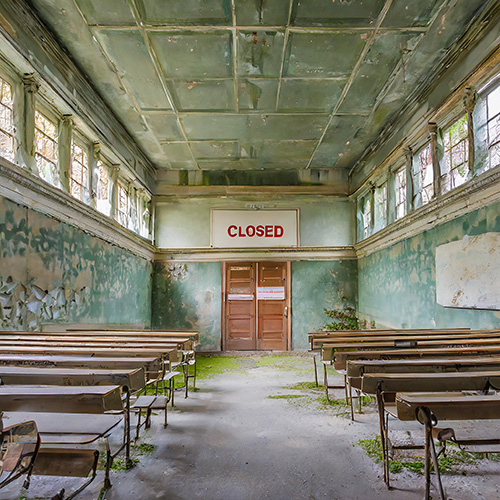Blog
Keen-Eyed Teens and the Low-Booze Bowl
- Details
- Created: Tuesday, February 13 2024 16:01
 For most youth, sports are a learning opportunity.* Adults expound on the obvious lessons: preparation, determination, cooperation. When it comes to the alcohol industry, however, there are hidden lessons: normalization, intention, brand recognition. Alcohol ads and branding in media favored by youth have a demonstrated impact on how early and how enthusiastically kids start drinking. The converse question is, what has an impact on what gets kids to prefer not to drink?
For most youth, sports are a learning opportunity.* Adults expound on the obvious lessons: preparation, determination, cooperation. When it comes to the alcohol industry, however, there are hidden lessons: normalization, intention, brand recognition. Alcohol ads and branding in media favored by youth have a demonstrated impact on how early and how enthusiastically kids start drinking. The converse question is, what has an impact on what gets kids to prefer not to drink?
The Super Bowl serves as a flashpoint for this tension. As the most-watched television block every year, the Bowl draws millions of viewers. Since Super Bowl parties are home-based, celebratory events, many of these viewers are underage; we estimate this year’s bowl reached 27.6 million viewers under 18 years of age. With the eyeballs come the ad dollars, and the NFL has long boasted robust connections with Big Alcohol. Until last year, Anheuser-Busch InBev—the makers of Budweiser and Bud Light, among many, many, many, many other brands—had a long-running sponsorship deal with the league allowing plum placement for its campaigns. But now most other major producers have jumped in as well, with paid spots running the gamut from sly to inept to cynically exploitative.
“Really, the most responsible alcohol ad is one shown somewhere only adults are watching,” said Michael Scippa, Public Relations Director for Alcohol Justice. “But when you get cartoon characters, superheroes, social media influencers—then it’s really obvious you’re not trying to get adults. You’re not trying to get college students. You’re trying to get kids.”
Alcohol Justice has long stood alongside many national and international groups calling to Free Our Sports, and in particular Free The Bowl, and dry up the ubiquitous alcohol money in professional athletics. This year, however, AJ did more—it created an environment for the kids to enjoy the big game without the many messages (both corporate and social) normalizing reckless consumption.
Through partnership with San Rafael’s Karma Club, Alcohol Justice sponsored a Super Bowl watch party. Over 40 kids from the San Rafael area came out, to watch the game in a comfortable and safe space centered on them. Alongside the must-haves—pizza, sodas, screens, Niners gear, and music—was the guiding rule: every time you spot an alcohol ad, the TV gets muted and there’s a raffle for prizes on the spot.
“It’s funny,” said David Thompson, Youth for Justice Program Director, “you worry about, ‘are we going to sensitive the kids to the ads? Are we going to make them like them?’ But the moment the ad started, they just shouted it down, killed the sound, and completely ignored it.”
 As it turns out, this Super Bowl was one of the ad-lightest in recent memory. Five ads ran, no brand ran multiple ads. More tellingly, nearly every ad leaned into celebrity endorsements (the obligatory, treacly Budweiser campaign notwithstanding), often with celebrities such as LL Cool J who have limited if any youth appeal. The reasons for this wide dialing back of the Big Alcohol onslaught bear further analysis, but for Free Our Sports advocates, the signs seem promising. Not only has U.S. society, inspired perhaps by Dry January, broadly pivoted into more deliberative approaches to alcohol consumption, but the industry’s experience trying to draw in youth via was nothing more than catastrophic.** Together, these may have created a gun-shy industry, but that discounts the contributions of an increasingly savvy, self-advocating youth.
As it turns out, this Super Bowl was one of the ad-lightest in recent memory. Five ads ran, no brand ran multiple ads. More tellingly, nearly every ad leaned into celebrity endorsements (the obligatory, treacly Budweiser campaign notwithstanding), often with celebrities such as LL Cool J who have limited if any youth appeal. The reasons for this wide dialing back of the Big Alcohol onslaught bear further analysis, but for Free Our Sports advocates, the signs seem promising. Not only has U.S. society, inspired perhaps by Dry January, broadly pivoted into more deliberative approaches to alcohol consumption, but the industry’s experience trying to draw in youth via was nothing more than catastrophic.** Together, these may have created a gun-shy industry, but that discounts the contributions of an increasingly savvy, self-advocating youth.
“These kids are razor sharp,” said Thompson. “They have all the smarts to know when they’re being manipulated by these companies. And I think we’re helping them realize it doesn’t have to be that way. They can see it coming, they can talk back to it, they can live free of it.”
The Super Bowl ended in many broken hearts for local fans. But the Super Bowl was just a beginning for the youth of San Rafael. Equipped with a place to engage with their own health and future and things to say to companies that might want to hijack both, they are the ones who will see the Free The Bowl message become reality.
* Sports are a learning opportunity for some adult coaches named Kyle Shanahan, too, at least when it comes to overtime rules.
** The story of Bud Light’s brief support for, and sudden abandonment of, transgender TikTok influencer Dylan Mulvaney should be explored in greater detail. Suffice to say that support for transgender rights is much stronger among younger U.S. residents, as is use of TikTok, and Bud Light itself has always tried to be a youth-oriented brand—to the point where it has, in the past decade, been favored by underage drinkers over even alcopops.
READ MORE about the movement to Free The Bowl.
READ MORE about Big Alcohol using COVID-19 solidarity to move more product.
The Value of California's Alcohol Tax Is the Value of Its Students
- Details
- Created: Tuesday, February 06 2024 01:25
 Students of the California State University (CSU) system keep finding themselves pieces in Sacramento’s bleak budgetary chess. Last year, the legislature passed AB 840, which closed revenue holes by handing Big Alcohol carte blanche to market directly to underage undergraduates. To follow that up, California Governor Gavin Newsom clawed back $499 million from the system to balance the 2024 budget.
Students of the California State University (CSU) system keep finding themselves pieces in Sacramento’s bleak budgetary chess. Last year, the legislature passed AB 840, which closed revenue holes by handing Big Alcohol carte blanche to market directly to underage undergraduates. To follow that up, California Governor Gavin Newsom clawed back $499 million from the system to balance the 2024 budget.
The solution for both—one that neither kicks needed funding down the road, nor increases risks of academic failure and physical harm to students—comes from a simple, popular, yet apparently perversely unthinkable policy: ask the alcohol industry to pay the bare, fair minimum.
California’s taxes on alcohol producers are not a percentage of sales. Instead, they are set at a fixed dollar amount per quantity produced. This means that every year, it becomes cheaper and cheaper to be a producer in California, and that does not take into account federal alcohol tax cuts. Since California last established new rates in 1992, the alcohol excise tax has lost 55% of its value. In 2022, the California Department of Tax and Fee Administration reported approximately $429 million in revenue. However, had the excise tax value kept up with inflation, the expected take would have been $952 million—an additional $523 million just from normalizing the current tax rate.
That half a billion would fill the CSU budget hole, with a little change left over to fund programs and remove any ostensible need to sell student eyes to the industry. More importantly, it would modernize an alcohol tax that was last addressed during the first Bush administration.
This is more than just a pleasing symmetry. Not only are 40% of CSU students underage, but alcohol-related incidents are the leading causes of mortality for that age group. As of 2014, over 4,100 college-age young adults died annually of alcohol-related injury, including 2,614 from motor vehicle crashes. As for the other three acute causes of death, homicide and suicide are both strongly related to alcohol overconsumption, and alcohol greatly increases respiratory depression—and therefore overdose—from opioid use. On top of that, heavy and binge drinking patterns are associated with a number of negative academic consequences—and underage alcohol use can get students punished by the school itself.
There are a number of environmental interventions that can bring these numbers back down, but one of the most forthright ones are, again, alcohol taxes. By moderately raising the typical price of a drink, alcohol tax hikes affect people involved in the most dangerous drinking problems, particularly cash-strapped heavy drinkers—which perfectly describes the college students in the crosshairs of CSU’s bottle-pushing strategy.
This will not be the last time California is faced with brutal budgetary tradeoffs. Even a moderate hike in the alcohol excise tax can improve health in the short term, raise funds in the medium term, and let more compassionate heads in the legislature avoid mercenary lawmaking in the long term.
READ MORE about 2023’s AB 840
READ MORE about closing budget holes with alcohol taxes
TAKE ACTION to tell Gov. Newsom to include a cost-of-living alcohol excise tax increase in the May budget revise.
Alcohol Action Network Receives National Recognition
- Details
- Created: Monday, November 20 2023 10:32
 The quietest people at the table would like to become the loudest ones in the legislative chamber.
The quietest people at the table would like to become the loudest ones in the legislative chamber.As its members become more deeply entrenched in the lasting harms and avalanche of deregulation that gathered during the pandemic, AAN's leaders have filled an ever more crucial place in the prevention landscape. In recognition of this, and their tireless efforts to coordinate academics and wonks to move out of their comfort zones, Dr. Haley and Ms. Tourre were deservedly formally recognized by APHA section leader Dr. Paul Gilbert.
The leadership awards were given to them at the American Public Health Association's annual conference, the flagship public health gathering in United States. The conference drew over 13,000 attendees. And while the ceremony was only in front of the Alcohol Tobacco and Other Drugs section, the audience contained advocates and scientists working across addiction medicine fields, because while alcohol harm mitigation remains AAN's explicit challenge, models that ensure that lifelong advocates are able to advance evidence-based, compassionate policy benefit everyone in the field.
Alcohol Justice and the California Alcohol Policy Alliance are proud participants in the Alcohol Action Network, and extend sincere congratulations and gratitude to Dr. Haley and Ms. Tourre.
READ MORE about the Alcohol Action Network
More Articles ...
Subcategories
Help us hold Big Alcohol accountable for the harm its products cause.
| GET ACTION ALERTS AND eNEWS |
STAY CONNECTED    |
CONTACT US 24 Belvedere St. San Rafael, CA 94901 415-456-5692 |
SUPPORT US Terms of Service & Privacy Policy |


